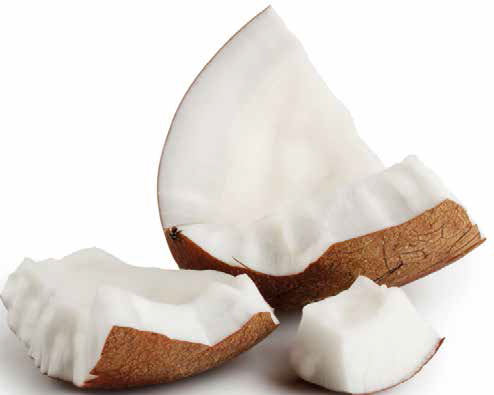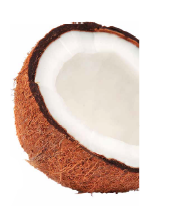Who knew that these indulgent foods could also be super healthy? BY SASHA GONZALES.


Who knew that these indulgent foods could also be super healthy? BY SASHA GONZALES.

1 Walnuts.
How they’re good for you: “They are rich in omega-3 fatty acids and may help with lowering bad cholesterol and triglyceride levels,” says Bibi Chia, principal dietician at Raffles Diabetes and Endocrine Centre.
“They are also high in protein, making them an excellent post-workout snack when your muscles are recovering, as well as a satisfying mid-afternoon snack. Some studies have found that walnuts also have anti-cancer properties.”
Like all nuts, they are high in fat (a 100g serving contains 65g of fat – which is just under the recommended daily amount) so don’t eat too much.
Make them a tasty treat: Sprinkle a handful of chopped walnuts over salads or pasta dishes, blend a few into a smoothie, work them into cookie dough or cake batter, mix them into yogurt, or add them to stir-fries.

2 Dark Chocolate.
How it’s good for you: According to Pooja Vig, founder of The Nutrition Clinic, dark chocolate is full of antioxidants and phytochemicals. These have a protective effect. They help prevent cellular damage caused by ageing and environmental toxins.
However, processing can strip away the health benefits of dark chocolate, so if you want to make sure you’re getting the most out of your chocolate bar, get the kind that contains at least 70 per cent cacao.
“The higher the cacao percentage, the less sugar the chocolate contains. If you can find a good-quality, artisanal brand that contains between 80 and 90 per cent cacao, even better,” says Pooja.
Make it a tasty treat: Enjoy it on its own, melt and serve it as a dip for strawberries or orange segments, mix it with a handful of your favourite nuts, or add chunks of it to a mug of warm low-fat milk.

3 Avocado.
How it’s good for you: “Avocados are high in monounsaturated fat, which helps to protect the heart,” says Bibi. “There are also 20 vitamins and minerals in every serving, including potassium, which regulates blood pressure, lutein for healthy eyes, folic acid, and vitamins B C as well as E. The buttery fruit is packed with fibre and phytochemicals, too.”
Make it a tasty treat: Use the creamy fruit as a spread for sandwiches, wraps or rolls, a dip for sweet potato wedges and raw veggie sticks, or in smoothies.
You can also cube the flesh for salads, or mash and mix it with chopped cherry tomatoes, onions and lime juice to create delicious Mexican guacamole.

4 Greek Yogurt
How it’s good for you: This yogurt is high in protein, providing between 15g and 20g per 200ml tub, says Bibi. It may also contain live bacteria for good gut health. If you’re looking for a deliciously healthy bonebuilding food, you can’t do better than this as it’s also rich in calcium.
Make it a tasty treat: Rich and creamy Greek yogurt is the perfect accompaniment to breakfast cereal, fresh fruit and raw vegetable sticks.
You can also blend it with fruit and freeze the mixture to make ice-pops, mix a small amount with chopped herbs and spices for salad dressing, add it to milkshakes and smoothies, or use it as a marinade/ tenderiser for chicken or cauliflower.
Greek yogurt can even replace part of the cream cheese in a cheesecake – or part of the butter or cream in cupcake frosting.

5 Hummus
How it’s good for you: This Middle Eastern dip is made from mashed chickpeas, tahini (sesame paste), garlic and olive oil – all superfoods, says Bibi. And, despite its rich taste and creamy texture, hummus is low in saturated fat and high in plant protein.
“Like all beans and legumes, chickpeas are also loaded with fibre,” Bibi adds. “This helps to make you feel full, prevent constipation and lower your bad cholesterol levels.”
Make it a tasty treat: Besides being a yummy dip for raw carrot and celery sticks, hummus is great as a sauce for noodles or pasta (thin it out with a little water for a runnier sauce), a topping for roasted veggies like capsicum, pumpkin and eggplant, a salad dressing, and as a spread for pizza.

6 Tempeh
How it’s good for you: It’s hard to stop munching on tempeh, especially if it’s been sliced thinly and baked to a crisp.
So it’s good to know that this treat – made from fermented and compressed soya beans – is rich in soya protein, phytochemicals like flavonoids and phenolic acids, and is a super source of amino acids for vegans.
According to Bibi, new studies have shown that regular consumption of tempeh can help lower bad cholesterol levels. It may also help reduce the risk of osteoporosis and certain cancers.
Make it a tasty treat: Bake or pan-fry slices of tempeh and add it to salads, sandwiches, wraps, noodle dishes, stir-fries and curries.

7 Grass-Fed Beef
How it’s good for you: We’ve long been told that red meat is bad for our health, but who can resist a juicy beef burger or steak? If you buy a quality piece of beef, you don’t have to feel guilty for enjoying it.
“Choose lean, hormonefree, grass-fed beef because it has higher levels of omega-3 fatty acids, which have been shown to help lower bad cholesterol levels,” says Pooja.
“It also has high amounts of essential minerals, like calcium, zinc, iron, potassium and magnesium. Eating grass-fed beef once or twice a week is an excellent way to get enough iron and protein in your diet. A healthy serving is palm-sized.”
Make it a tasty treat: Go for the cut that best suits your recipe. Blade steak is the most versatile. Use it for barbecuing, pan-frying or slow cooking, such as in a braised dish.
Chuck, with its gelatinous texture, is ideal for curries and stews. For stir-frying, choose oyster blade steak. Blade roast is perfect for barbecuing, pan-frying, stirfrying and slow cooking.

8 Coconut
How it’s good for you: Coconut water, milk, oil and butter all boast various nutritional properties that benefit the body in many ways, says Pooja.
Coconut water, which is the clear liquid found in young green coconuts, is an excellent source of energy. It also contains electrolytes, which perform a number of functions, from regulating your heartbeat to allowing your muscles to contract so that you can move.
Coconut milk, oil and butter have high levels of healthy saturated fatty acids and medium chain fatty acids. “Although high in fat, coconut milk, oil and butter help fill you up and keep you satiated, so they’re great for controlling cravings,” says Pooja.
Make it a tasty treat: Mix coconut water with a squeeze of lime for a refreshing thirst-quencher, or add one tablespoon of chia seeds and a pinch of Himalayan salt to a glassful for a healthy postworkout drink.
If you want to make your favourite soup extra creamy, add a splash of coconut milk. For a filling snack, mix half a tablespoon of coconut butter with two teaspoons of raw cacao powder. SH
























